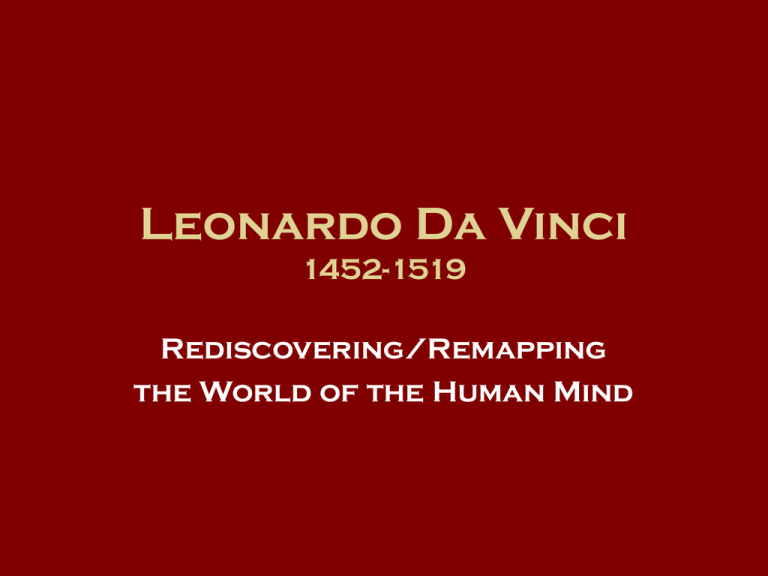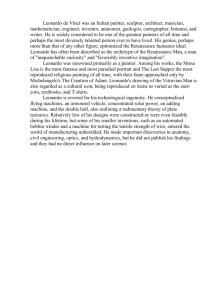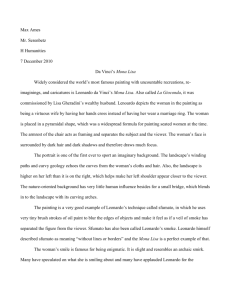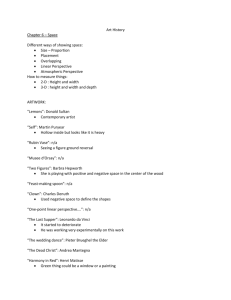Leonardo Da Vinci
advertisement

Leonardo Da Vinci 1452-1519 Rediscovering/Remapping the World of the Human Mind Leonardo da Vinci Let’s find out if it’s true… • Vitruvius wrote: ...in the human body the central point is naturally the navel. For if a man be placed flat on his back, with his hands and feet extended, and a pair of compasses centered at his navel, the fingers and toes of his two hands and feet will touch the circumference of a circle described therefrom. And just as the human body yields a circular outline, so too a square figure may be found from it. For if we measure the distance from the soles of the feet to the top of the head, and them apply that measure to the outstretched arms, the breadth will be found to be the same as the height ... Focus of Inquiry Originality and Legacy of Leonardo: the quintessential Renaissance Man A New Vision: The world as A Composition, A Machine Symmetry "Non mi legga chi non e matematico." Leonardo da Vinci, Vitruvian Man, 1513, dim. 25 x 19.2 cm Cf. Vitruvius, De Architectura: The Planning of Temples The Regular Solids, one of Leonardo's Illustrations for Pacioli's Divina proportione, Reti p. 70. Questions 1 [Leonardo and the Renaissance Man] 1.1 Why is he often described as the "Universal Renaissance Man"? What are his major achievements? Why is he worth studying? 1.2 And Michelangelo's Statue, David (1501-4), sculpting as "making of men." Points to consider: growing artistic consciousness and attention to detail; commodified use of art objects, e.g., the Medici patronage; commonalities and differences between Leonardo and Michelangelo in their style/philosophy. 1.3 Leonardo’s Self-Portraits 1.4 Leonardo’s sketches and notebooks: a genius who “studies” and studiously explores his imaginations. 1.5 What do you see there? Check out, for instance, his anatomical drawings; chain-link drive; doublehulled ship; flying machine; gear study; helicopter; military tank; parachute; printing press; triple-tier machine gune; variable speed device, etc. Questions 2 [Leonardo and the Renaissance ideas of Beauty and Representation; Contemporary Variations and Parodies] 2.1 The Last Supper (1497); compare Leonardo's version with Others' such as Giotto's, Dürer's or Bassano's; a contemporary, controversial Twist (parody in Milan, 2005) 2.2 Mona Lisa (1503); Marcel Duchamp, L.H.O.O.Q. (1919); Salvador Dali. Self Portrait as Mona Lisa (1954); Andy Warhol, Mona Lisa (1963); Mary Rose Storey, Mona Lisas (1980); Lillian Schwartz, Mona Lisa/Leonardo Composite (1987); Lillian Schwarts, Leonardo morphed to the Mona Lisa (1995); An array of Mona Lisa Adaptations 2.3 St. Jerome (1481) Questions 3 [Leonardo and Mysteries] 3.1 architectural and anatomical symmetry in nature: vitruvian man (cf. Greek Philosophy/Mathematics such as Pythagoras) 3.2 Add your own







